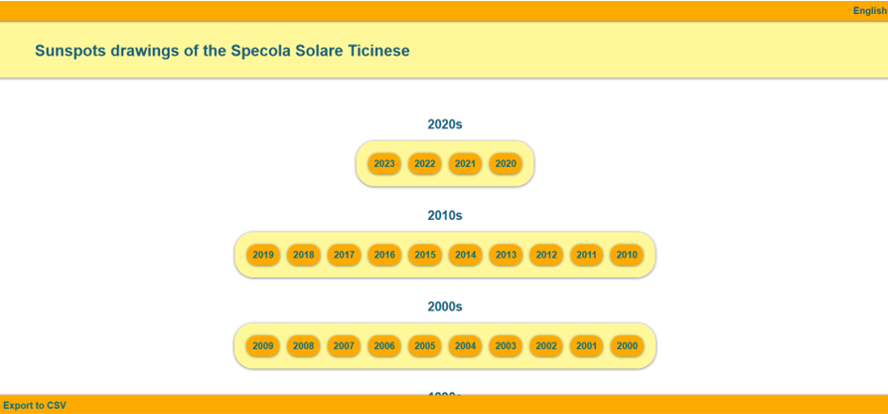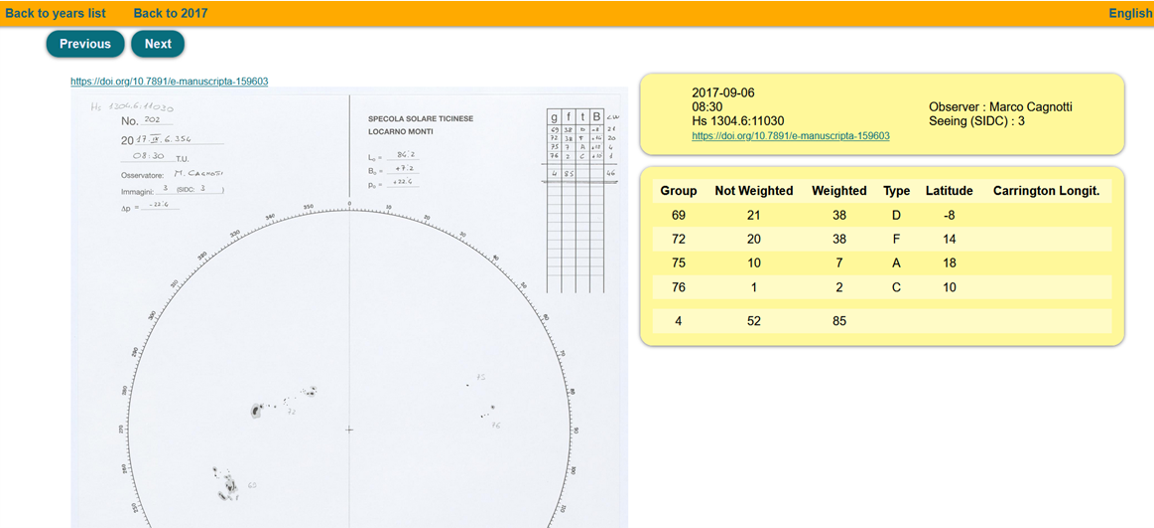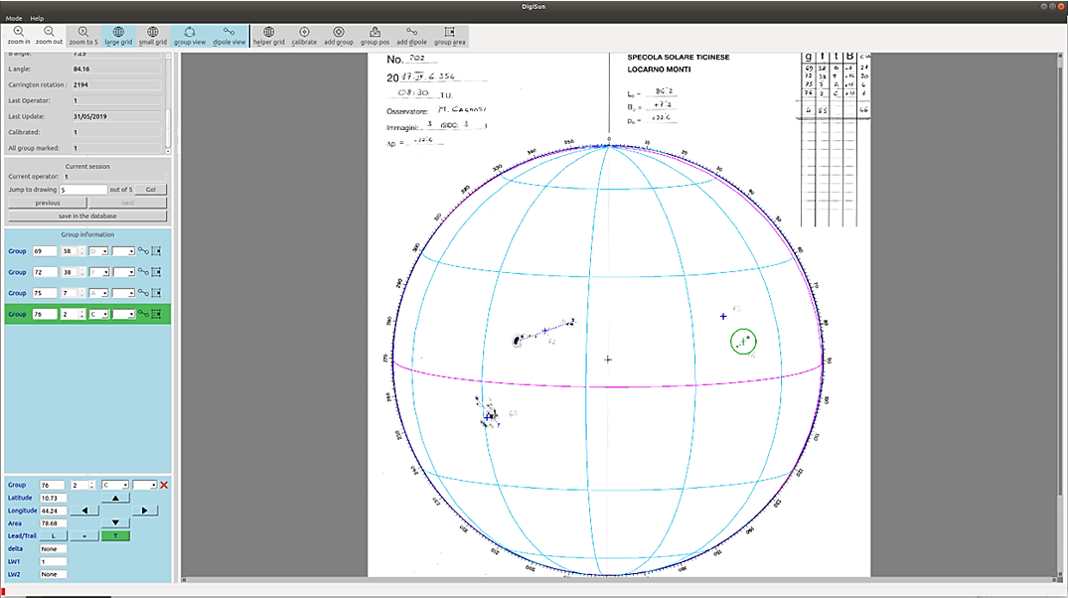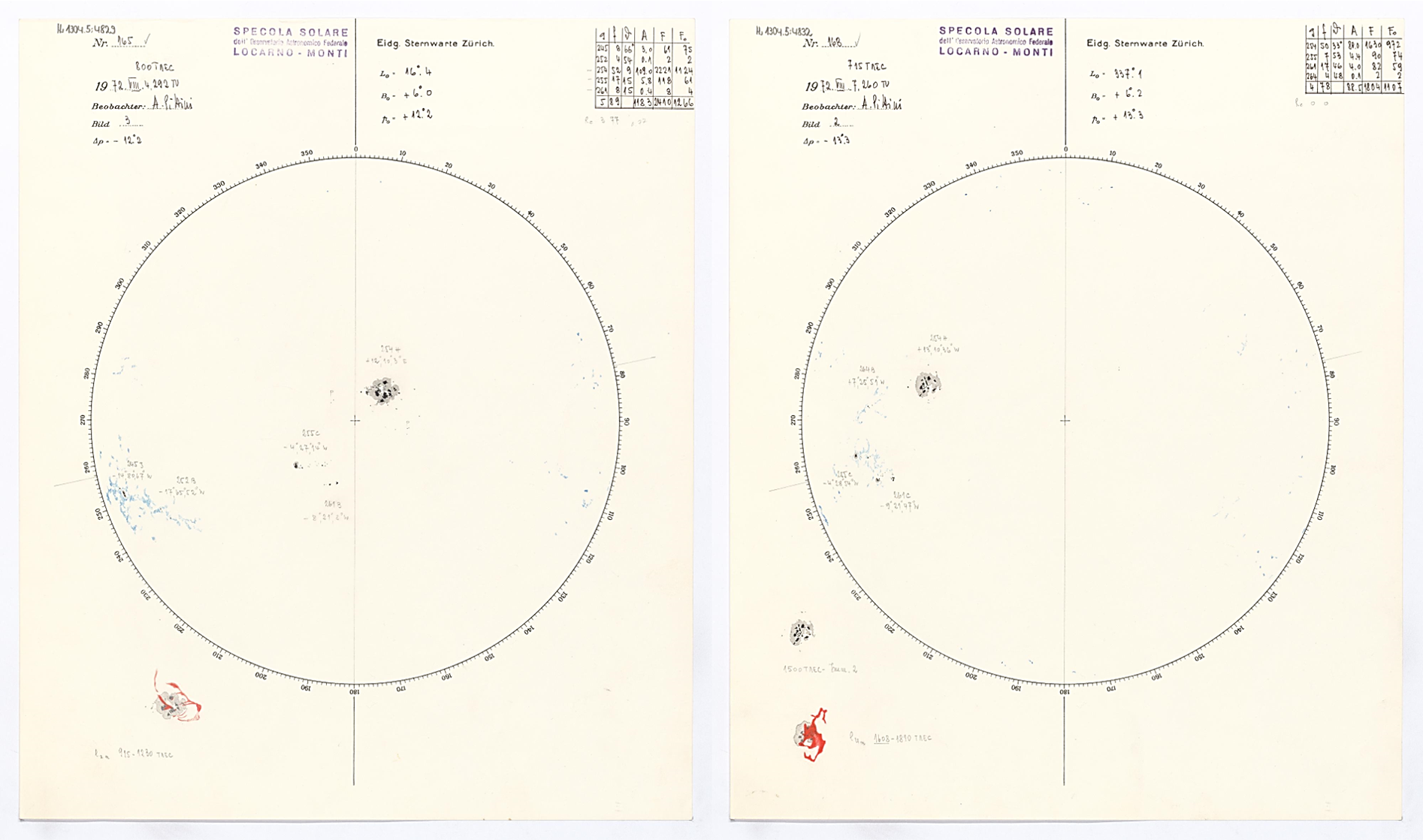The Specola Solare Ticinese (SST), which is the pilot station of the SILSO network, completed a 5 years project for the digitization and safe archiving of the sunspot observations and data collected at the Specola Solare Ticinese in Locarno (Zenodo link). In addition, SST and IRSOL (https://www.irsol.usi.ch/?noredirect=en_US) also developed an interactive web interface to look at these data, located at https://sunspots.irsol.usi.ch/db/ A screenshot of this webpage is shown underneath.

The database contains data for each sunspot group observed and recorded at the Specola Solare Ticinese from 1 June 1957 until 2022, and daily updated since. Recorded for each group are the date and time of the observation, a code for the observer, the sky quality during the observation, the incremental group number, the weighted sunspot count, the unweighted sunspot count (if available), the Zurich classification, the latitude and longitude determined with DigiSun (a free software developed by SILSO for measuring and recording sunspot group features) or, if these are not available, the latitude and longitude determined manually with the Stonyhurst solar disk, the ETH Zurich signature, and the DOI code of the drawing (Digital Object Identifier). Further details can be found on the aforementioned Zenodo website. Underneath an example combining the SST drawing with the extracted data for 6 September 2017.

DigiSun is a semi-automatic software developed at the Royal Observatory of Belgium (ROB / SILSO / USET) to measure parameters from sunspot drawings. The software was recently rewritten in Python with new functionalities such as the sunspot group area measurement. One of the strengths and the originality of the software is its ability to handle different drawing formats and hence to analyse drawings from other collections. By sharing the software with different observatories, the goal is to achieve a better homogenization of sunspot drawing data. This would ease the merge of data from different collections to fill the inevitable data gaps at one single station and to extend collections back into the past. A first international collaboration with the Specola Observatory in Locarno was initiated in 2019. Since then the DigiSun software is used on a daily basis for the processing of the new observations at Specola and it was used to analyse the whole collection since 1957. Underneath screenshot shows the DigiSun software at work with the Locarno drawing of 6 September 2017. That day, the strongest flare of the entire solar cycle 24 was produced by the sunspot group labeled here as number 69.

The two drawings underneath were made on 4 and 7 August 1972 and illustrate what a treasure trove the digitized Locarno archive truly is. The complex sunspot group that is present on the solar disk (number 254) was responsible for important flaring activity and related space weather effects on 4 August (the "Apollo" storm - Knipp et al. 2018) and the famous "Seahorse" flare on 7 August (NASA/MSFC/BBSO). The observers for those 2 days added in the lower left corner also detailed drawings in white light and H-alpha (a line in the red portion of the solar spectrum at 656.3 nm) of the eruptive activity they observed over the region number 254. The 4 August detail shows the gradually weakening flare ribbons associated with the strong eruption that peaked barely 2 hours earlier at 06:21 UTC. The 7 August detail captures the major flare (peaking at 15:28 UTC, and estimated X9 or X10 by NOAA space weather forecasters at that time) in progress.

This STCE newsitem has been written in collaboration with Sabrina Bechet (SILSO / USET).





